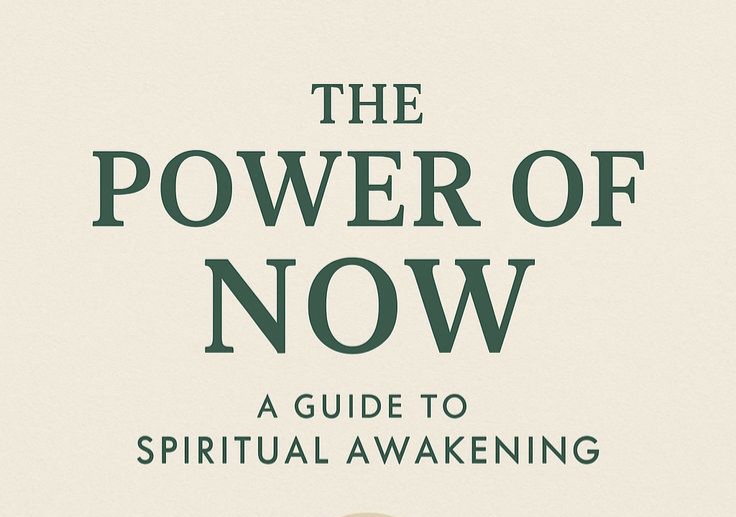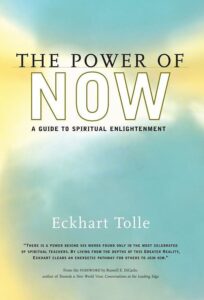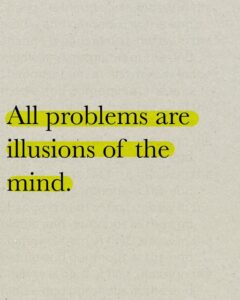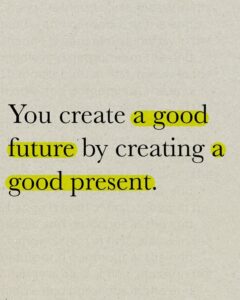
Maryam N
In the modern world, life moves fast. Notifications, deadlines, social pressures, and constant information bombard us every day. Amid this chaos, most of us live in our minds rather than in reality. We dwell on past mistakes, replay regrets, or anxiously chase future outcomes. Eckhart Tolle’s The Power of Now is a timeless guide that reminds us: life happens only in the present moment. True peace, joy, and clarity are not in the past or future they exist only in the Now.

Why This Book Matters
Tolle’s message is both simple and profound. Most of human suffering is self created, arising from psychological time the mind’s fixation on what was or what will be. By learning to live in the Now, we can free ourselves from stress, anxiety, and inner conflict. The book has become a modern spiritual classic because it is universal, transcending culture, religion, and age. Whether you are a student, professional, parent, or retiree, the teachings are practical and transformative.
Key Concepts of The Power of Now
1. The Present is Everything
The past and future exist only in your mind. The present is the only moment where life actually occurs. By anchoring awareness in the Now, we experience reality directly rather than through the filter of thoughts, fears, or memories.
Quote: “Realize deeply that the present moment is all you ever have. Make the Now the primary focus of your life.”
Tip: Start your day with a short 2-minute meditation, focusing solely on your breath or surroundings. This sets the tone for being present all day.
2. Observer Awareness
Tolle teaches that we are not our thoughts. Instead, we can learn to observe thoughts without identifying with them. Imagine watching leaves floating down a river your thoughts pass in the same way.
Mini Exercise: Sit quietly and mentally label each thought as “thinking” as it arises. Notice patterns without judgment. Over time, you’ll feel more control over your mind.
Tip: Use this practice during stressful moments, like traffic jams or work conflicts, to remain calm and composed.
3. Acceptance & Surrender
Resistance to reality creates tension. When we fight what is, we amplify stress and frustration. Acceptance doesn’t mean giving up it means acknowledging reality and responding with clarity rather than emotion-driven reaction.
Exercise: When faced with an uncomfortable situation, pause and silently say: “This moment is exactly as it is.” Observe how it changes your emotional response.
Tip: Combine acceptance with actionable steps. For instance, if a project at work goes wrong, accept the situation calmly, then plan your next move without panic.
4. Connecting with the Body
The mind lives in abstraction; the body lives in the present. Focusing on bodily sensations anchors you to the Now. Breath, posture, and sensory awareness bring attention away from endless thinking.
Mini Exercise: Close your eyes and scan your body from head to toe, noticing sensations without judgment. Even two minutes can create a sense of grounding.
Tip: Pair this with stretching or walking. Feel each step or stretch fully, engaging all senses.
5. Understanding the Pain Body
The “pain body” is the accumulation of past emotional pain. It feeds on negative thinking and triggers automatic reactions. Observing it reduces its influence.
Tip: When feeling upset, pause and ask: “Is this my reaction or the pain body speaking?” Awareness interrupts automatic emotional responses.
Exercise: Journal about recurring negative emotions, noting when the pain body may have been activated. Awareness itself begins the healing process.
Practical Daily Applications
Pause Frequently: Set reminders to take 1–2 minute breaks to breathe and notice surroundings.
Label Your Thoughts: Mentally tagging thoughts as “thinking” separates you from automatic reactions.
Engage Fully: Whether washing dishes, walking, or cooking, immerse yourself completely.
Accept What You Cannot Control: Let go of situations, people, or outcomes you cannot change.
Body Awareness: Use breathwork, stretching, or mindful walking to anchor yourself in the present.
Digital Detox: Reduce mindless scrolling or multitasking to strengthen awareness.
Mindful Listening: During conversations, listen fully without planning responses in your head.
Conscious Transitions: When moving from one activity to another, take a deep breath to reset your mind.
Why It’s Relevant Today
In an era of constant distraction, most people live in a state of mental noise. Social media, emails, and notifications keep our minds in the past or future. Tolle’s teachings remind us that the present is not fleeting; it is the only reality. Even small, consistent practices of presence can transform perception, mood, and overall wellbeing.

Example: Imagine walking in a park. Normally, your mind might wander to pending tasks. Practicing presence, you notice the breeze, the warmth of the sun, and the sound of birds. Suddenly, you feel calm and alive. These simple moments, multiplied daily, shift your entire life experience.
Quick Guide Summary
Concept
Practical Tip
Mini Exercise
Present Moment
Focus on what is happening now
2-minute morning meditation on breath or surroundings
Observer Awareness
Watch thoughts without judgment
Label each thought as “thinking”
Acceptance & Surrender
Respond calmly, don’t resist
Repeat: “This moment is exactly as it is”
Body Connection
Anchor in bodily sensations
Scan your body from head to toe
Pain Body Awareness
Observe emotional triggers
Journal recurring emotions; notice automatic reactions
Digital Detox
Limit distractions
Take short breaks from phones or notifications
Mindful Listening
Fully engage in conversations
Focus entirely on the other person’s words
Conscious Transitions
Reset between tasks
Take a deep breath when switching activities
Applying the Lessons in Real Life
Work: Approach tasks calmly and fully present. Notice the difference in focus and efficiency.
Relationships: Listen and respond mindfully. Presence improves connection and reduces conflict.
Stressful Situations: Pause, breathe, observe emotions, and accept reality. React less, respond more.
Personal Growth: Daily practices of presence enhance clarity, decision making, and emotional resilience.
Final Thoughts
The Power of Now is not about instant change. It is about gradual awareness. Each moment of conscious presence reduces stress, increases clarity, and strengthens emotional resilience. By observing thoughts, accepting the present, connecting with the body, and noticing emotional triggers, we reclaim life from mental noise. Happiness, freedom, and peace are not somewhere in the future they exist here, now.

Quote: “Life is the dancer and you are the dance.” Eckhart Tolle
Every breath, every sensation, and every thought becomes a doorway to freedom when observed consciously. The present is your ultimate gift. Living fully in it transforms ordinary moments into profound experiences.
By integrating these practices into your daily routine, even for a few minutes, you can experience a deep sense of calm, focus, and joy. The Power of Now is a guide, a journey, and an invitation to awaken to the miracle of life happening in each moment.